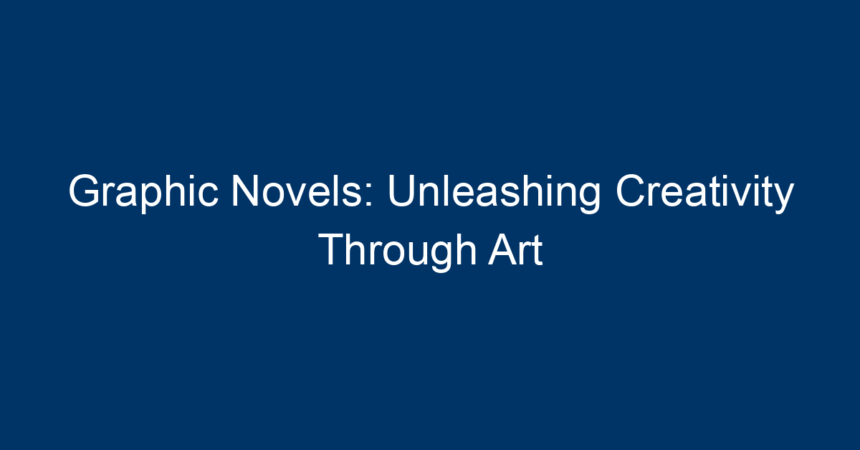Graphic novels have surged in popularity over the last few decades, transforming the way stories are told and experienced. These vibrant, illustrated narratives blend visual art with literature, creating a unique medium that engages readers on multiple levels. In this article, we will explore the world of graphic novels, their artistic potential, and why they are a fantastic tool for unleashing creativity.
What Are Graphic Novels?
Graphic novels are long-form comics that tell a story using a combination of text and illustrations. Unlike traditional comic books, which often comprise single issues of a series, graphic novels usually present complete narratives in a single volume. Their stories cover a broad spectrum of genres ranging from fantasy to memoir, making them appealing to diverse audiences.
The Rise of Graphic Novels
The graphic novel format gained mainstream acceptance in the late 20th century. Titles like Maus by Art Spiegelman and Persepolis by Marjane Satrapi not only won critical acclaim but also demonstrated the profound storytelling potential of the medium. Today, graphic novels are found on school curricula, in libraries, and on bestseller lists, proving that they are more than just entertainment—they are a form of art and education.
The Artistic Evolution of Graphic Novels
Visual Storytelling
At their core, graphic novels utilize the synergy of art and text. The illustrations serve not just as embellishments but as integral components of the narrative. Artists like Chris Ware and Alison Bechdel have pushed the boundaries of visual storytelling, incorporating techniques such as unconventional panel layouts, color palettes, and typography. This multifaceted approach allows readers to immerse themselves in diverse narratives.
Genre Versatility
One of the defining features of graphic novels is their genre versatility. Whether it’s science fiction, romance, horror, or historical fiction, graphic novels find ways to convey emotions, ideas, and narratives that traditional literature may struggle to express visually. This adaptability makes graphic novels appealing to a broad audience, encouraging creativity among writers and artists who wish to explore various themes and narratives.
The Psychological Impact of Graphic Novels
Engaging Multiple Senses
Graphic novels engage both visual and textual senses, creating a more immersive experience. This dual engagement fosters greater emotional connections to the story and its characters. For instance, a character’s facial expression can convey emotions that words alone cannot capture, allowing readers to enter the character’s world deeply.
Accessibility and Learning
Graphic novels can enhance literacy and comprehension, especially among visual learners. Their balance of images and text can help readers tackle complex themes and narratives. Educators have increasingly incorporated graphic novels into classroom settings to bridge gaps in understanding and encourage a love for reading.
Unleashing Creativity with Graphic Novels
A Platform for Self-Expression
Creating graphic novels can be a profoundly liberating experience for writers and artists alike. This medium allows creators to express complex ideas, personal experiences, or even surreal fantasies in visually appealing formats. The choice of colors, artistic styles, and narrative structures empowers creators to communicate deeper messages.
Collaborative Opportunities
Graphic novels often foster collaboration between writers and artists, blending various creative talents to produce remarkable works of art. This collaboration encourages creative synergy, leading to innovative storytelling methods that enrich the final product. Aspiring graphic novelists should seek opportunities to collaborate with illustrators, colorists, and letterers to explore the full potential of their ideas.
Overcoming Creative Blocks
For many creators, graphic novels provide a structured yet flexible way to approach storytelling. The combination of images and text allows for experimentation, helping artists overcome the infamous “blank page syndrome.” With the freedom to doodle, sketch, and refine narrative arcs visually, creators can find inspiration in the synergy between text and art.
Cultivating Graphic Novel Culture
Graphic Novel Communities
As the popularity of graphic novels grows, so do the communities surrounding them. Local comic book shops, online forums, and social media platforms offer spaces for fans and creators to share their love for this unique art form. Participating in these communities can provide valuable feedback, foster collaboration, and inspire new ideas.
Utilizing Digital Platforms
With advancements in technology, the landscape for graphic novels has evolved. Digital platforms allow creators to reach a global audience, enabling independent artists to showcase their work without traditional publishing constraints. Websites like Webtoon and Tapas provide avenues for budding creators to experiment and publish their stories while connecting with readers worldwide.
Noteworthy Graphic Novels to Consider
To truly understand the power of graphic novels, it’s essential to explore some standout works:
1. Maus by Art Spiegelman
This Pulitzer Prize-winning graphic novel uses anthropomorphic characters to depict the Holocaust’s harrowing experiences. It’s a powerful exploration of memory and trauma, showcasing how graphic novels can convey profound historical narratives.
2. Fun Home by Alison Bechdel
A coming-of-age memoir that delves into themes of identity, family, and sexuality, Fun Home uses a blend of poignant storytelling and intricate illustrations to engage readers deeply.
3. Watchmen by Alan Moore and Dave Gibbons
A groundbreaking work in the superhero genre, Watchmen explores complex themes such as morality, power, and humanity, proving that graphic novels can tackle significant philosophical questions.
Conclusion: The Future of Graphic Novels
Graphic novels have become a medium of choice for artists and writers alike, offering endless opportunities for creative expression. As they continue to evolve, they will undoubtedly expand the boundaries of both art and literature.
Actionable Insights
- Explore Diverse Genres: Whether you’re a reader or a creator, delve into various genres within graphic novels to enrich your understanding and creativity.
- Join or Form a Community: Connect with others who share your passion for graphic novels. This could be through local comics clubs or online forums.
- Start Your Project: If you’ve ever considered creating a graphic novel, start small. Sketch ideas, develop characters, and begin drafting. Remember, the process of creation is as rewarding as the final product.
- Utilize Technology: Leverage digital tools and platforms to explore new avenues for publishing and sharing your work.
By embracing graphic novels, you not only celebrate a unique art form but also unlock your creative potential. Whether as a reader or creator, the world of graphic novels awaits to inspire, engage, and transform your artistic journey.




